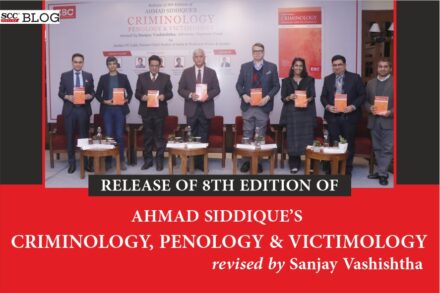Introduction
Arbitration is a procedure in which a dispute is submitted, by agreement of the parties, to one or more arbitrators who make a binding decision on the dispute. In choosing arbitration, the parties opt for a private dispute resolution procedure instead of going to court.1 Disputes can be submitted to an Arbitral Tribunal through an arbitration agreement between the parties in their original contract, or in the case of India; many cases can also be redirected to arbitration by the courts. The parties can appoint their arbitrators, making it a comparatively informal and fast alternative to litigation. The Arbitral Tribunal’s decision called as an “award” and holds the same standing as a court order.
Arbitration can be of two types: ad hoc and institutional. An institution does not regulate the former, while the latter is. Institutional arbitration is favoured for its efficiency, confidentiality, and flexibility. It is undergoing a significant transformation with the integration of artificial intelligence (AI).
Integrating AI in arbitration can revolutionise dispute resolution. One of the most significant impacts of AI is the substantial increase in efficiency and speed by automating repetitive tasks, reducing case processing time, and alleviating backlogs in overburdened legal systems. This efficiency translates to cost reduction, making arbitration more accessible and affordable. AI’s precision minimises human error, enhancing the quality of outcomes, especially in complex cases. Furthermore, AI democratises access to high-quality arbitration services, providing tools to smaller firms and individuals previously accessible only to larger organisations.
Can AI influence arbitration, including predictive analysis systems and online dispute resolution procedures, and how they can be used in advanced manners, along with assistive technologies that can aid the arbitration process. This article also addresses the potential of appointing AI arbitrators to replace human arbitrators in the future concerning the current laws on arbitration.
AI in arbitration — The Indian perspective
India has taken significant steps to promote technology and AI in arbitration and dispute resolution. The Supreme Court, in cases like Shakti Bhog Foods Ltd. v. Kola Shipping Ltd.2 and Trimex International FZE Ltd. v. Vedanta Aluminium Ltd.3, has acknowledged the legitimacy of using technology in arbitration and recognition of arbitration agreements through emails and other means of communication. In Grid Corpn. of Orissa Ltd. v. AES Corpn.4, the Supreme Court held that notice of appointment to the third arbitrator could be emailed and did not need to be submitted physically or in writing. Furthermore, the Court recognised the validity of arbitration agreements through emails without their physical signing, amending Section 7(4)(b)5 of the Arbitration and Conciliation Act, 19966 to include “electronic means” as one of the ways to form arbitration agreements. The Court also introduced an e-Filing portal under the Mission Mode Project7, allowing the signing of documents electronically.8 These initiatives underscore the crucial role of technology, emphasising their potential to enhance efficiency. Signing documents online makes the procedural aspect of arbitration hassle-free, cost-effective, and speedy. Drawing from these initiatives, there are numerous other ways in which advanced AI can influence arbitration.
How AI influences arbitration
Predictive analysis
An area of domestic or international arbitration where AI can be utilised, is in predicting case outcomes based on outcome of similar disputes. This will give parties the opportunity for risk analysis to the parties and counsels to establish their presentation and arguments accordingly. The application of AI in this context could be highly beneficial if specific organisations employ this technology and maintain a comprehensive “data pool” of all previous arbitral awards.9 Although no system is explicitly built for arbitration, similar algorithms have been shown to predict case outcomes accurately. For example, universities such as University College London (UCL), the University of Pennsylvania, and the University of Sheffield successfully predicted the outcomes of cases concerning Articles 3, 6 and 8 of the Convention10 for the Protection of Human Rights and Fundamental Freedoms, achieving an accuracy rate of 79 per cent.11 Additionally, another predictive data analysis tool called Ravel Law prepares comprehensive results by accessing data based on the work of over 400 law firms.12 This software highlights AI’s potential for predicting case outcomes and their ability to present well-rounded results.
Some case laws recognise this program. Pyrrho Investments Ltd. v. MWB Property Ltd.13, it was the first case that allowed predictive coding software to be used. In this case, the claimant had over 3 million documents to disclose that were relevant to this case. This software is a step up from linear review14 which involved simply reviewing the document without analysing and presenting the most important documents at the top, enhancing human decision-making by integrating computer-assisted pattern recognition. The judgment highlights how predictive programs increase decision-making efficiency and mitigate the futility of manually going through large amounts of paperwork.
However, the success of such software depends only upon the availability of established arbitral awards and requisite information about the regulations, parties, and counsel. This is because AI acts based on data fed into the software. Since arbitration is an alternative to litigation and operates in a privatised setting, many centres, such as the International Chamber of Commerce (ICC) and Hong Kong International Arbitration Centre (HKIAC), do not publish total awards or only publish their summaries.15 Although this confidentiality is maintained for privacy and security purposes, the lack of publishing of these awards will be a challenge if institutions want to implement predictive software.
Nevertheless, this issue has been addressed, and AI is stepping up. Technologies like the GAR Arbitrator Research Tool (GAR ART)16 gather anonymised data from parties in over 185 countries and can be used for arbitration and alternative dispute resolution (ADR).17 This approach maintains a balance band and upholds confidentiality while paving the way for future AI applications in arbitration.
Thus, Indian arbitration can consider case prediction software, but that would require a robust database of all the information of past arbitral awards, which may violate certain privacy norms.
Online dispute resolution
Online dispute resolution (ODR) is a notable application of AI in arbitration. ODR leverages information and communication technology to resolve disputes online without requiring physical presence. AI in ODR includes decision support systems with negotiation support systems and automated counselling systems. The technologies facilitate efficient online negotiation and decision-making processes. ODR is cost-effective as it reduces expenses related to travel and renting facilities, increasing the possibility of a remote resolution. When parties in different jurisdictions face scheduling conflicts, ODR can be an efficient mechanism. These platforms use optimised algorithms to perform administrative tasks, draft contracts, and more, enhancing efficiency. ODR platforms may also feature some counselling systems which provides information based on data input by the parties. Even across Africa, countries are gradually beginning to subscribe to treaties and enact municipal legislations that recognise and seek to dynamically incorporate ODR internally and externally as an efficient and effective channel for accessible and timely justice dispensation. The Association of Southeast Asian Nations (Asean) Committee on Consumer Protection (ACCP) has also launched the Guidelines on Online Dispute Resolution (ODR), with countries like Indonesia and Thailand already having a national ODR system.18 Many countries are advancing in ODR, and India has also made similar progress.
Indian arbitration has also recognised the potential of ODR in essential online arbitration but also for advanced stages and has given it considerable recognition. Indian Judges have highlighted its threefold use in promoting dispute containment, avoidance, and resolution. The Supreme Court of India also recognised the importance of ODR and has established an e-Committee to prioritise its development. The Indian Government has introduced the “Vivad se Vishwas” scheme to resolve tax issues through ODR. India’s largest B2B platform, Udaan, also utilised ODR to solve 1800 disputes in 1 month, proving how efficiently it could process data.19 These programs signify the encouragement that the Government and the courts collectively provide to increase the use of technology and AI in dispute resolution. In State of Maharashtra v. Praful B. Desai20, the Court held that witness statements and evidence could be recorded through videoconferencing, upholding the use of ODR in the Indian legal system.
National Institution for Transforming India (NITI) Aayog published “The ODR Policy Plan for India” in 2021.21 The potential that ODR holds is expressed in this Report. One of the major driving forces of alternative dispute resolution processes like arbitration is that it is an alternative to litigation. ODR can aid in dispute containment by adding an extra digital layer to ADR, ensuring pre-litigation cases, such as small insurance and civil claims, are automatically resolved by arbitration before reaching the court system. This meets ADR’s motive and helps relieve the pressure from courts analysing the case and then redirecting them towards arbitration. It can also aid in dispute avoidance by providing vital information, for example, about credit disputes, which allows parties to understand the strengths and weaknesses of their legal positions. By identifying the stages where disputes typically arise, parties can proactively address potential challenges before they escalate. As recommended by NITI Aayog, the Arbitration and Conciliation Act of 199622 can be modified to include ODR, providing a robust regulatory framework for online arbitration. This aligns with United Nations Commission on International Trade Law (Uncitral‘s) move towards including ODR in arbitration by publishing technical notes23 on ODR, which supports its integration into the arbitration framework.
However, such integrated ODR processes require a long-time to advance. The legal process in India is still very much reliant on physical processes despite active moves by the Government to make it more efficient. For example, In Coastal Marine Constructions & Engg. Ltd. v. Garware Wall Ropes Ltd. 28724, the Supreme Court ruled that the arbitration agreement would not be enforceable unless the stamp duty was paid. The State Government’s regulations nevertheless mandate that parties affix a copy of the e-stamp certificate to the agreement as evidence of stamp duty payment25, even though the Central Government has made the procedure easier with e-stamps and online payment. This cumbersome procedure does not integrate ODR effectively with the end-to-end online dispute settlement process.
Assistive technologies
Various generalised assistive technologies can play essential roles in procedural aspects of arbitration. National language processing (NLP) and machine learning algorithms can help parties resolve disputes. NLP combines statistical modeling, machine learning (ML), deep learning, and computational linguistics to comprehend and produce text and speech.26 Translating documents consumes a significant amount of time in international commercial arbitration, which is known for its extensive number of documents and bundles. Often, the involved parties speak different languages, the arbitral agreement may be in another language, or the location where the award enforcement is sought may require a different translation.27 Transcribing programs alleviate the efficiency of the arbitration process. The Supreme Court created Supreme Court Vidhik Anuvaad Software (Suvas) for this.28 Driven by artificial intelligence, it can translate court rulings, orders, and documents from English into nine scripts used in vernacular languages.
Such technologies make the arbitration process much more fluid. Similar technologies for international languages are also present, and the global nature of arbitration is embraced. In the preceding year the India International Arbitration Centre (IIAC) entered into a memorandum of understanding (MoU) with Bhasha Interface for India (Bhashini), utilising Bhashini’s cutting-edge software for translating documents from one language to another and providing linguistic services during arbitration.29 This enables parties in any State to easily access arbitration processes, with all necessary documents translated into the required vernacular language. This technological advancement demonstrates how inclusivity in arbitration can be enhanced by facilitating AI, ensuring fair and swift resolutions for all parties involved.
Transcription software developed in India uses AI to help transcribe conferences, recordings, in-person and online arbitration hearings. The transcription software drastically reduced the time budgeted for a hearing with a Supreme Court Constitutional Bench from 10 days to 3 days, making the process cheaper and more efficient.30 The transcription software promotes greener arbitration by reducing the carbon footprint. Assistive AI, like such, appears more generalised but can help cater to many procedural steps involved in arbitral proceedings.
Can AI arbitrators ever replace human arbitrators?
Whether it will replace manual jobs, this particular question, often arises when anything related to AI is discussed. So, here, the question of whether AI can ever replace human arbitrators is bound to occur. Considering current rules and regulations and the Uncitral Model India follows, it is unlikely to happen.
Nevertheless, there are recommendations to appoint AI as an arbitrator to maintain impartiality. Human arbitrators have sometimes been found to be influenced by emotions or cultural differences, with many studies regarding cognitive and behavioural influences.31 Conversely, AI does not hold biases or prejudices based on cultural values, gender, or other factors. Characteristics of such AI programs can be tailored to fit each specific case, ensuring all necessary attributes are present while eliminating any potential for bias or conflict of interest.
However, this may not be legally viable. Although the Uncitral Model law does not expressly require human arbitrators, other conventions guiding arbitration in many jurisdictions, such as Turkey and Scotland, do. For example, in France, Article 1450 of the French Civil Procedure Code32 gives information for domestic arbitration:
“Only a natural person having full capacity to exercise his or her rights may act as an arbitrator.”
For example, Article 12(1):33
“When a person is approached in connection with his possible appointment as an arbitrator, he shall disclose in writing any circumstances.”
By using “person” and “his” to refer to arbitrators, this impliedly interprets an arbitrator as likely as a human. This means replacing human arbitrators remains a far-fetched idea with the current law in mind.
Conclusion
AI possesses excellent potential to transform the dispute resolution process. Predictive analysis will have twofold uses: benefiting counsel and the parties and helping them understand the risks and possible arguments before the case reaches arbitration. However, it does not come without its demerits, which include the lack of information needed for AI to produce the right results. Online dispute resolution procedures bring many advanced systems other than online arbitration. It allows dispute containment as well as resolution. Generally, assistive technologies provide significant support to the procedural aspect of arbitration, such as contract review, transcription, and translation. Finally, addressing the ever-prevalent question of whether AI will replace humans; it seems like in the case of arbitration, it is implausible. AI can aid arbitration to alleviate its efficiency and effectiveness, but it does not come without technical problems.
*Former Judge, Supreme Court of India, and Chairperson, India International Arbitration Centre.
1. WIPO — Definition.
5. Arbitration and Conciliation Act, 1996, S. 7(4)(b).
6. Arbitration and Conciliation Act, 1996.
7. Ministry of Electronics & Information Technology, Government of India, Mission Mode Projects.
8. eCommittee, Supreme Court of India, eCourts Project — Phase II: Objective Accomplishment Report as per Policy Action Plan Document.
9. Gülüm BayraktaroÄŸlu-Özçelik and Åž. Barış Özçelik, “Use of AI-Based Technologies in International Commercial Arbitration”, (2021) 12(1) European Journal of Law and Technology.
10. Convention for the Protection of Human Rights and Fundamental Freedoms, Arts. 3, 6, and 8.
11. Nikolaos Aletras, D. Tsarapatsanis, Daniel Preotiuc-Pietro and Vasileios Lampos, “Predicting Judicial Decisions of the European Court of Human Rights: A Natural Language Processing Perspective”, PeerJ Computer Science.
12. Said Gulyamov and Mokhinur Bakhramova, “Digitalisation of International Arbitration and Dispute Resolution by Artificial Intelligence”, (2022) 9 World Bulletin of Management and Law 79-85.
13. 2016 EWHC 256.
14. Oliver Browne and Hayley Pizzey, Pyrrho Investments Ltd v. MWB Property Ltd: A Landmark Decision on Predictive Coding in e-Discovery.
15. Kathleen Paisley and Edna Sussman, “Artificial Intelligence Challenges and Opportunities for International Arbitration”, 11(1) NYSBA New York Dispute Resolution Lawyer.
16. Alternative Dispute Resolution.
17. Austrian Yearbook on International Arbitration 2019 (Wolters Kluwer, 2019).
18. ASEAN launches Guideline on Online Dispute Resolution for Consumers.
19. Press Release, NITI Aayog, Online Dispute Resolution’s Role Critical during Covid-19 Pandemic: Justice D.Y. Chandrachud (10-4-2021).
22. Arbitration and Conciliation Act, 1996.
23. United Nations Commission on International Trade Law, Technical Notes on Online Dispute Resolution.
25. Chhattisgarh Stamp (Payment of Duty by Means of e-Stamp Certificate) Rules, 2016, R. 33; See Karnataka Stamp (Payment of Duty by Means of e-stamping) Rules, 2009, R. 27(1).
26. IBM, Natural Language Processing.
27. Mahnoor Waqar, “The Use of AI in Arbitral Proceedings”, (2022) 37:3 Ohio State Journal on Dispute Resolution.
28. Supreme Court of India, Press Release 25 November 2019, available at: <https://main.sci.gov.in/pdf/Press/press%20release%20for%20law%20day%20celebratoin.pdf>.
29. India International Arbitration Centre (IIAC)’s Post.
30. Anirudh Das, Interview with Vikas Mahendra, Partner Keystone & Co-Founder, CORD & TERES.
31. Nikolaos Aletras, D. Tsarapatsanis, Daniel Preotiuc-Pietro and Vasileios Lampos, “Predicting Judicial Decisions of the European Court of Human Rights: A Natural Language Processing Perspective”, PeerJ Computer Science.
32. French Civil Procedure Code, Art. 1450.
33. UNCITRAL Model Law on International Commercial Arbitration, 1985.






